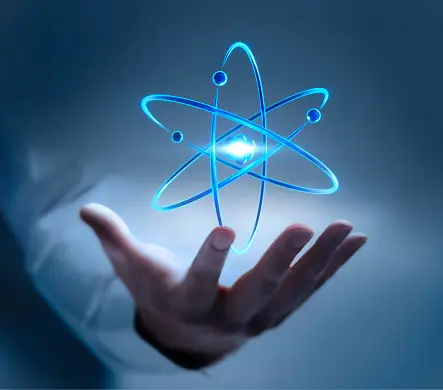
How to Understand the Relationship Between Radioactivity and Nuclear Reactions In 2023? understanding the relationship between radioactivity and nuclear reactions has become increasingly important due to the ever-growing demand for sustainable energy sources and the need to address environmental concerns. Radioactivity and nuclear reactions play a significant role in various aspects of our lives, from power generation to medical treatments. This article aims to provide a comprehensive and accessible guide to grasp the fundamentals of radioactivity and its connection to nuclear reactions.
What is Radioactivity?
Radioactivity is a natural phenomenon exhibited by certain unstable atomic nuclei. These nuclei emit particles or electromagnetic radiation in the form of alpha particles, beta particles, and gamma rays to achieve a stable configuration. This process is known as radioactive decay.
The Discovery of Radioactivity
The journey of understanding radioactivity began in the late 19th century with the groundbreaking work of Henri Becquerel, Marie Curie, and Pierre Curie. Their experiments with uranium salts and other radioactive materials led to the discovery of this mysterious radiation.
Types of Radioactive Decay
Alpha Decay
Alpha decay involves the emission of alpha particles, which consist of two protons and two neutrons. This type of decay reduces the atomic number of the nucleus, transforming it into a different element.
Beta Decay
Beta decay results in the emission of beta particles, which can be either electrons (beta-minus decay) or positrons (beta-plus decay). This process aims to achieve a more stable ratio of protons to neutrons.
Gamma Decay
Gamma decay accompanies alpha and beta decay, where the nucleus releases high-energy gamma rays. These rays are a form of electromagnetic radiation and do not affect the atomic number or mass.
Nuclear Reactions: Fission and Fusion
Nuclear Fission
Nuclear fission involves the splitting of heavy atomic nuclei, such as uranium-235, into smaller fragments when bombarded with neutrons. This process releases an immense amount of energy and more neutrons, leading to a chain reaction.
Nuclear Fusion
Nuclear fusion, on the other hand, occurs when light atomic nuclei, like hydrogen isotopes, combine to form heavier nuclei, like helium. Fusion releases even more energy than fission and is the process that powers the sun.
The Role of Radioactivity in Nuclear Reactions
Radioactive materials play a crucial role in nuclear reactions, especially in nuclear power generation. For instance, nuclear reactors use controlled fission reactions to produce heat, which then generates electricity.
Read More: 10 Ideas for Utilizing Social Science In 2023
Applications of Nuclear Reactions
Nuclear Power Generation
Nuclear power plants provide a significant portion of the world’s electricity, offering a reliable and low-carbon energy source. The controlled release of energy through nuclear reactions ensures a steady supply of power.
Medical Applications
In the medical field, nuclear reactions find application in various diagnostic and therapeutic procedures. Techniques such as positron emission tomography (PET) and radiotherapy contribute to disease diagnosis and treatment.
Industrial Uses
Nuclear reactions also find applications in industries, such as material analysis, radiography, and sterilization processes. These applications play a crucial role in ensuring product quality and safety.
Safety and Containment of Radioactive Materials
Safety measures and protocols are in place to handle and contain radioactive materials properly. Strict regulations and engineering controls minimize the risks associated with the use of nuclear substances.
Environmental Impact and Radioactivity
The environmental impact of nuclear reactions is a topic of concern. Proper waste management and decommissioning of nuclear facilities are essential to safeguard the environment and public health.
The Future of Nuclear Energy
As technology advances, new reactor designs, such as small modular reactors (SMRs) and advanced fast reactors, offer potential solutions to enhance nuclear energy’s safety and efficiency.
Common Misconceptions about Radioactivity and Nuclear Reactions
Nuclear Energy Is Always Dangerous
While nuclear energy does carry risks, modern safety practices and reactor designs have made nuclear power one of the safest sources of energy.
Radioactive Waste Is Unmanageable
Effective waste management techniques, such as reprocessing and deep geological repositories, enable the safe handling of radioactive waste.
Nuclear Power Plants Can Explode Like Bombs
Nuclear power plant designs prevent the occurrence of nuclear explosions, as the process differs significantly from a nuclear bomb detonation.
Conclusion
Understanding the relationship between radioactivity and nuclear reactions is essential in harnessing the power of atomic processes for the betterment of humanity. From generating electricity to revolutionizing medical treatments, the knowledge gained from this exploration holds the key to a sustainable and brighter future.
FAQs
How does nuclear fission work?
Nuclear fission occurs when the nucleus of an atom absorbs a neutron, becomes unstable, and splits into two smaller nuclei, releasing energy in the process.
Is nuclear energy renewable?
No, nuclear energy is not renewable, as it relies on finite resources like uranium. However, it is considered low-carbon and can contribute to reducing greenhouse gas emissions.
How is radioactivity measured?
Radioactivity is measured using units such as becquerels (Bq) or curies (Ci), which indicate the rate of radioactive decay.
Can nuclear reactions occur naturally?
Yes, nuclear reactions can occur naturally, such as the decay of radioactive isotopes in the Earth’s crust.
What are the benefits of nuclear power?
The benefits of nuclear power include a steady and reliable energy supply, low greenhouse gas emissions, and reduced reliance on fossil fuels.












2 Comments